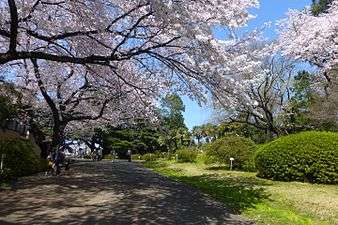Koishikawa Botanical Gardens


The Koishikawa Botanical Gardens (小石川植物園 Koishikawa Shokubutsuen, 40 acres, 16 hectares) are botanical gardens with arboretum operated by the University of Tokyo Graduate School of Science. They are located at 3-7-1 Hakusan, Bunkyō, Tokyo, Japan, and open daily except Mondays; an admission fee is charged.
The gardens date to 1684, when the 5th Tokugawa shogun, Tsunayoshi, established the Koishikawa Medicinal Herb Garden. In 1877, after the Meiji Restoration, they became a part of the university and the birthplace of Japanese botanical research. Today research activities are focused on the evolution, phylogenetic systematics, and physiology of higher plants.
The gardens' collections contain some 4,000 plant species, including 1,400 hardy woody species, 1,500 hardy herbaceous species, and 1,100 tropical and subtropical species. Notable outdoor collections include camellias, cherries, maples, Japanese primroses, bonsai trees, and alpine plants. A particular strength are the wild-collected species from Japan, Korea, Taiwan, and China.
The gardens also contain a herbarium with 1.4 million specimens, and a library of 20,000 books and journals.
The Koishikawa Yojosho, an early Japanese hospital, was established within the herb gardens by the eighth shogun Tokugawa Yoshimune in 1722.
See also
| Wikimedia Commons has media related to Koishikawa Botanical Gardens. |
References
Coordinates: 35°43′N 139°45′E / 35.717°N 139.750°E